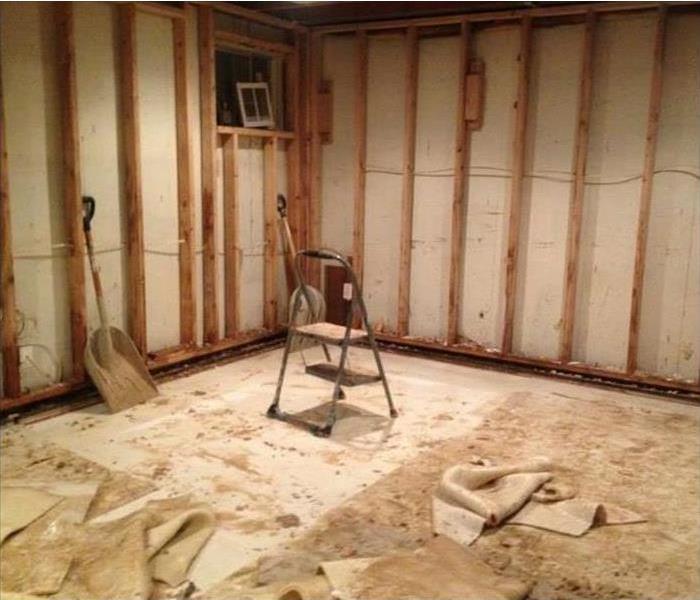How to Respond to a Basement Flood
12/26/2018 (Permalink)
How to Respond to a Basement Flood
Under normal weather conditions and with a functional sump pump, a basement flood is a rare event. However, one should still be prepared to handle such a situation should it arise, given that the speed of response can directly affect property values and environmental conditions in the home.
1. Personal Safety
In the event that it becomes necessary to enter the flooded area, a number of precautions will be necessary. If the amount of water is lower than a few inches, making temporary walkways out of cinder blocks and boards may be enough to allow you to reach pertinent areas and begin the process of removing the remaining water. However, if the situation is severe and the electric and gas systems have been compromised by water intake, it is best to have these systems disabled in order to reduce electrocution and fire risks. Standing water can also incubate disease, so boots, gloves and respirators are advised during prolonged periods in an inundated home.
2. Restoring and Reconfiguring
If the sump pump is no longer functional, restoring it should be a high priority during a basement flood, especially if further inclement weather is expected. For the same reason, any exterior factors that tend to cause water pooling around entryways to the basement may need attention, such as the direction of downspouts. Some interior elements such as wet drywall or sensitive electrical appliances may need to be replaced. Carpets, carpet padding, and subflooring may need drying or replacement depending on the type. Many insurance coverage plans may require photographic documentation of the damages in order to process claims.
A basement flood in Glendale, AZ, can be a catastrophic event, but proper planning and appropriate tools can make managing the damage much easier. If the above steps are not feasible due to the risks involved, remember to contact a qualified cleanup service professional.



 24/7 Emergency Service
24/7 Emergency Service
